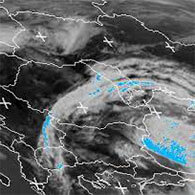STABILIZATION OF CORPORATE OVERDUE PAYMENTS IN ASIA PACIFIC BUT NEW WORRIES OVER SLOWING GROWTH IN CHINA
STABILIZATION OF CORPORATE OVERDUE PAYMENTS IN ASIA PACIFIC BUT NEW WORRIES OVER SLOWING GROWTH IN CHINA
19 Jun, 2014 13:54
ZIUA de Constanta
 1469
Marime text
1469
Marime text
 1469
Marime text
1469
Marime text
According to the Coface survey of credit risk management in Asia Pacific, corporate payment experience in the region stabilized overall in 2013, with the exception of companies in Australia and China which saw a greater number of non-payments. Slowing growth in China remains a concern for corporates in other economies in the region in 2014.
Fewer corporates faced long overdues in 2013
68% of companies surveyed reported that they faced overdues in 2013(compared with 67% in 2012). Overdues moved slightly toward the long-end with 14% of respondents reporting that their average overdue days were more than 90 days compared with 13% in 2012.
In Coface’s experience, companies whose long overdue accounts (i.e. at least 180-days) represent more than 2% of their turnover could experience liquidity problems and run a high risk of non-payment to their suppliers. Only 30% of the respondents had such overdues in 2013, signaling an improvement compared to the 37% respondents in 2012. These results point to a stabilized corporate payment experience in Asia in 2013.
§ Australia : External demand hindered by weaker demand from China
In the Australian economy, more survey respondents experienced overdues. 85% of the respondents reported overdues, which tended to last longer compared with 2012. This trend was well-supported by the findings on the construction sector in Australia. With weakening demand from China (the biggest export destination accounting for 30% of total exports) the sustained high savings rate and lackluster investor confidence the Australian economy faces challenges ahead.
§ China: Reform in the making
Growth in the Chinese economy has slowed and is expected to further decline to 7.2% YoY in 2014 (after 7.7% in 2013 and 7.4% in 1Q 2014). However, the Chinese government is using fiscal and monetary tools to ensure that, as far as possible, growth is sustained. The recently announced RRR (reserve requirement ratio) cut for rural financial institutions and the supportive policy on clean-energy investment, should secure GDP growth above 7%. In 2013, 82% of respondents reported overdues. The worsening corporate credit payment experience – especially for the electronics sector – remains a major concern and is expected to continue to have a negative impact on business sentiment in 2014.
§ Hong Kong: Limited dynamism in sight
Economic activities in Hong Kong are expected to remain stable for 2014. The overall corporate payment experience, as suggested by the payment survey, shows improvement in 2013. This trend is confirmed by the textile-clothing industry, which should continue to see support coming from external demand growth due to the much-anticipated economic recovery in the US and selected European economies. Domestic drivers – consumption and investment – will be stable but should not see aggressive growth, due to the anti-corruption scheme in China that should limit Chinese tourists’ consumption of luxury goods.
§ India: Less volatile economic environment
India was the headline story in 2013 due to the rapid depreciation of the rupee and stubbornly high inflation, but the worst should be behind us. Companies in Indiafaced slightly improved corporate payment situations in 2013 compared to a year ago, while overdues were experienced by a higher percentage of survey respondents. Nevertheless, according to the payment survey results, companies in the IT/ISP and data processing sector did, however, see some improvement in payment experience. The victory of the Bharatiya Janata Party (BJP) in the Indian general election and its leader Narendra Modi, the country’s next Prime Minister who is known to be pro-business and market friendly, raised market expectations around industrial and social reform, even though this may take some time to implement. Nevertheless, reducing the budget deficit is still a challenge for the country.
§ Japan: Abenomics to add steam, benefit to retail sector
Prime Minister Shino Abe’s economic recovery plan in Japan has gained popularity both domestically and internationally. Its effects have, perhaps, improved the corporate payment experience in the country as shown by the payment survey results, with a clear decline in occurrence, length, and weight of long overdues recorded. Yet, while the first two arrows (fiscal and monetary stimuli) of Abenomics have been shot and received positive knee-jerk reactions, the third arrow (structural reform) is still longed for and is necessary for further optimism.
“The recent consumption tax hike in Japan – the first since 1997 - brings consumption tax from 5% to 8% – and is expected to push inflation up by 2.86%, with other indicators being equal. While worries are cast over such tax hikes and the likelihood of a repeat of the 1997-situation, such worst-case scenarios are rather unlikely due to supportive fiscal and monetary policies, higher household expenditure, and the 2020 Olympics. The FMCG sector – which saw good payment experience, both in absolute and relative terms – should benefit from growth from their customers downstream (i.e. the retail sector)”, said Rocky Tung, economist for the Asia Pacific Region of Coface.
§ Singapore: Supported by tourism, employment and global recovery
Singapore’s economy is expected to see growth pick up in 2014, due to various factors. Higher consumption supported by the strength of tourism, a recovery in external demand from developed markets, a stabilized housing market, and stronger manufacturing momentum will support the economy’s growth. With such improvements, it is likely that the payment experience of Singaporean corporates will see improvement too in 2014, the situation in 2013 having been largely similar to that in 2012.
§ Taiwan: External demand to drive growth, electronics sector at risk
The Taiwanese economy is expected to see moderate growth in 2014, supported by the strength of tourism and a recovery in external demand from the developed markets. Internal demand, particularly consumption, will remain sluggish due to lackluster wage growth situation across all sectors. As shown by the payment survey, although overdues became less common among Taiwanese corporates in 2013, the overdue period tended to be longer when compared with 2012, and more respondents had long-term overdues that represented more than 2% of their annual turnover.
“In comparison to the global economy, the electronics sector in Taiwan may be facing even more pressure going forward – particularly in the medium-term – and it is essential for businesses to find their positioning. More pressure is set to come from the fact that China is moving up the value chain. With an absolute disadvantage compared with China on labor cost, it is hard to imagine Taiwan boosting the manufacturing sector for the electronics sector – which has been the case since 2009. Moreover, as high value-added downstream processes (e.g. post-sales services) usually require proximity to the market, the Taiwanese sector would lose out to peers in China, Japan and Korea, where the populations are significantly larger,” said Rocky Tung.
2014 Outlook the threat of a slow growth in China looms over the region
From the hawk’s-eye view, Asia’s economic growth momentum remained strong in the post-crisis era, with Coface’s forecast pointing to a growth rate of 6.1% for 2014. Such momentum partly came from the dividend from economic bloom of the 2 biggest emerging markets – China and India – during the past decade. However, the outlook for growth in these two countries will be notably lower than the long-term growth trend (China averaged 10.6% and India averaged 7.8% growth between 2000 and 2011).
The upturn in the advanced economies (1.9% forecast for 2014, after 1.2% in 2013), mainly in the US and Europe, will benefit export-oriented economies in Asia such as Hong Kong, Taiwan and Singapore. However, slowing growth in China (expected at 7.2% in 2014) could impact the majority of the economies in Asia which have been relying on Chinese demand.
About the survey
This survey was conducted in the 4th quarter of 2013 and is based on responses from 2,373 companies of all sizes and industries in Australia, China, Hong Kong, India, Japan, Singapore and Taiwan. Its aim was to provide a broad understanding of the status of payment experiences, payment trends and credit risk management practices in companies in the Asia Pacific Region.
Fewer corporates faced long overdues in 2013
68% of companies surveyed reported that they faced overdues in 2013(compared with 67% in 2012). Overdues moved slightly toward the long-end with 14% of respondents reporting that their average overdue days were more than 90 days compared with 13% in 2012.
In Coface’s experience, companies whose long overdue accounts (i.e. at least 180-days) represent more than 2% of their turnover could experience liquidity problems and run a high risk of non-payment to their suppliers. Only 30% of the respondents had such overdues in 2013, signaling an improvement compared to the 37% respondents in 2012. These results point to a stabilized corporate payment experience in Asia in 2013.
| Overdue experience | Average overdue days over 90-days | Long-overdues equivalent to over 2% of annual turnover | ||||
| 2012 | 2013 | 2012 | 2013 | 2012 | 2013 | |
| Average of 7 Asia-Pacific economies | 67% | 68% | 13% | 14% | 37% | 30% |
| Australia | 83% | 85% | 9% | 10% | 43% | 23% |
| China | 77% | 82% | 13% | 18% | 36% | 33% |
| Hong Kong | 57% | 53% | 19% | 12% | 49% | 35% |
| India | 56% | 63% | 18% | 10% | 60% | 30% |
| Japan | 42% | 36% | 7% | 6% | 14% | 8% |
| Singapore | 68% | 76% | 20% | 21% | 53% | 45% |
| Taiwan | 77% | 56% | 7% | 14% | 11% | 16% |
§ Australia : External demand hindered by weaker demand from China
In the Australian economy, more survey respondents experienced overdues. 85% of the respondents reported overdues, which tended to last longer compared with 2012. This trend was well-supported by the findings on the construction sector in Australia. With weakening demand from China (the biggest export destination accounting for 30% of total exports) the sustained high savings rate and lackluster investor confidence the Australian economy faces challenges ahead.
§ China: Reform in the making
Growth in the Chinese economy has slowed and is expected to further decline to 7.2% YoY in 2014 (after 7.7% in 2013 and 7.4% in 1Q 2014). However, the Chinese government is using fiscal and monetary tools to ensure that, as far as possible, growth is sustained. The recently announced RRR (reserve requirement ratio) cut for rural financial institutions and the supportive policy on clean-energy investment, should secure GDP growth above 7%. In 2013, 82% of respondents reported overdues. The worsening corporate credit payment experience – especially for the electronics sector – remains a major concern and is expected to continue to have a negative impact on business sentiment in 2014.
§ Hong Kong: Limited dynamism in sight
Economic activities in Hong Kong are expected to remain stable for 2014. The overall corporate payment experience, as suggested by the payment survey, shows improvement in 2013. This trend is confirmed by the textile-clothing industry, which should continue to see support coming from external demand growth due to the much-anticipated economic recovery in the US and selected European economies. Domestic drivers – consumption and investment – will be stable but should not see aggressive growth, due to the anti-corruption scheme in China that should limit Chinese tourists’ consumption of luxury goods.
§ India: Less volatile economic environment
India was the headline story in 2013 due to the rapid depreciation of the rupee and stubbornly high inflation, but the worst should be behind us. Companies in Indiafaced slightly improved corporate payment situations in 2013 compared to a year ago, while overdues were experienced by a higher percentage of survey respondents. Nevertheless, according to the payment survey results, companies in the IT/ISP and data processing sector did, however, see some improvement in payment experience. The victory of the Bharatiya Janata Party (BJP) in the Indian general election and its leader Narendra Modi, the country’s next Prime Minister who is known to be pro-business and market friendly, raised market expectations around industrial and social reform, even though this may take some time to implement. Nevertheless, reducing the budget deficit is still a challenge for the country.
§ Japan: Abenomics to add steam, benefit to retail sector
Prime Minister Shino Abe’s economic recovery plan in Japan has gained popularity both domestically and internationally. Its effects have, perhaps, improved the corporate payment experience in the country as shown by the payment survey results, with a clear decline in occurrence, length, and weight of long overdues recorded. Yet, while the first two arrows (fiscal and monetary stimuli) of Abenomics have been shot and received positive knee-jerk reactions, the third arrow (structural reform) is still longed for and is necessary for further optimism.
“The recent consumption tax hike in Japan – the first since 1997 - brings consumption tax from 5% to 8% – and is expected to push inflation up by 2.86%, with other indicators being equal. While worries are cast over such tax hikes and the likelihood of a repeat of the 1997-situation, such worst-case scenarios are rather unlikely due to supportive fiscal and monetary policies, higher household expenditure, and the 2020 Olympics. The FMCG sector – which saw good payment experience, both in absolute and relative terms – should benefit from growth from their customers downstream (i.e. the retail sector)”, said Rocky Tung, economist for the Asia Pacific Region of Coface.
§ Singapore: Supported by tourism, employment and global recovery
Singapore’s economy is expected to see growth pick up in 2014, due to various factors. Higher consumption supported by the strength of tourism, a recovery in external demand from developed markets, a stabilized housing market, and stronger manufacturing momentum will support the economy’s growth. With such improvements, it is likely that the payment experience of Singaporean corporates will see improvement too in 2014, the situation in 2013 having been largely similar to that in 2012.
§ Taiwan: External demand to drive growth, electronics sector at risk
The Taiwanese economy is expected to see moderate growth in 2014, supported by the strength of tourism and a recovery in external demand from the developed markets. Internal demand, particularly consumption, will remain sluggish due to lackluster wage growth situation across all sectors. As shown by the payment survey, although overdues became less common among Taiwanese corporates in 2013, the overdue period tended to be longer when compared with 2012, and more respondents had long-term overdues that represented more than 2% of their annual turnover.
“In comparison to the global economy, the electronics sector in Taiwan may be facing even more pressure going forward – particularly in the medium-term – and it is essential for businesses to find their positioning. More pressure is set to come from the fact that China is moving up the value chain. With an absolute disadvantage compared with China on labor cost, it is hard to imagine Taiwan boosting the manufacturing sector for the electronics sector – which has been the case since 2009. Moreover, as high value-added downstream processes (e.g. post-sales services) usually require proximity to the market, the Taiwanese sector would lose out to peers in China, Japan and Korea, where the populations are significantly larger,” said Rocky Tung.
2014 Outlook the threat of a slow growth in China looms over the region
| Economy | Coface Country risk assessment | Coface Business Climate Assessment | GDP growth (%) | ||
|
Australia |
January 2014 | April 2014 | 2014 | 2013 | 2014 (forecast) |
| A2 | A2 | A1 | 2.4 | 2.8 | |
| China | A3 | A3 | B | 7.7 | 7.2 |
| Hong Kong | A1 | A1 | A2 | 2.9 | 3.0 |
| India | A4 | A4 | B | 4.4 | 5.0 |
| Japan | A1 | A1 | A1 | 1.5 | 1.4 |
| Singapore | A1 | A1 | A1 | 4.0 | 4.0 |
| Taiwan | A1 | A1 | A2 | 2.1 | 3.0 |
From the hawk’s-eye view, Asia’s economic growth momentum remained strong in the post-crisis era, with Coface’s forecast pointing to a growth rate of 6.1% for 2014. Such momentum partly came from the dividend from economic bloom of the 2 biggest emerging markets – China and India – during the past decade. However, the outlook for growth in these two countries will be notably lower than the long-term growth trend (China averaged 10.6% and India averaged 7.8% growth between 2000 and 2011).
The upturn in the advanced economies (1.9% forecast for 2014, after 1.2% in 2013), mainly in the US and Europe, will benefit export-oriented economies in Asia such as Hong Kong, Taiwan and Singapore. However, slowing growth in China (expected at 7.2% in 2014) could impact the majority of the economies in Asia which have been relying on Chinese demand.
About the survey
This survey was conducted in the 4th quarter of 2013 and is based on responses from 2,373 companies of all sizes and industries in Australia, China, Hong Kong, India, Japan, Singapore and Taiwan. Its aim was to provide a broad understanding of the status of payment experiences, payment trends and credit risk management practices in companies in the Asia Pacific Region.
Urmareste-ne pe Grupul de Whatsapp
Comentarii
 Fondul Documentar Dobrogea de ieri și de azi
Fondul Documentar Dobrogea de ieri și de azi




















